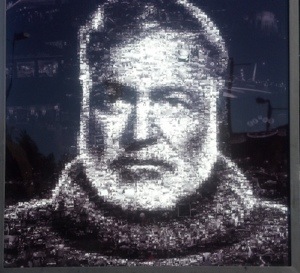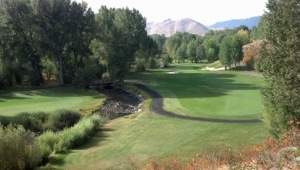By Suzanne Sparrow Watson
Each year my husband and I think about where to spend our vacation. We gather brochures, drool over pictures of exotic places and then end up going to Sun Valley, Idaho. Each September since 1988, like lemmings to the sea, we return to that idyllic spot. Mad cap adventurers we are not.
We used to beat ourselves up about this – we should see more of the world, yadda, yadda, yadda. But each year when we arrive in Sun Valley a great sense of peace comes over us and we know that we are in the right place.
Sun Valley is in some respects a typical resort town. You can buy lots of cheap t-shirts and baseball caps with bears on them. And the prices? Definitely aimed at tourists. It took Starbucks 10 years to get a permit to open here and it remains the only “chain” in town. If you can’t live without your Big Macs or Whoppers, this is not the place for you.
Celebrities flock here, in part because the locals are totally unimpressed with them. Visits by Tony Hawk and Lindsay Vonn cause more excitement than Bruce Willis or Bill Gates. The celebrities who come here are more relaxed and friendly than you might imagine. My husband once spent 20 minutes talking to Arnold Schwarzenegger about California’s tax problems in the local coffee shop. Obviously that was not a fruitful conversation.
Perhaps the celebrity most closely associated with Sun Valley is Ernest Hemingway. It was there that he relaxed, and wrote, beginning in 1939 until his suicide there in 1961. He holed up in a room at the Sun Valley Lodge to write arguably his best novel, “For Whom The Bell Tolls”. As one walks the hallways of the Lodge, there are numerous pictures of him hunting, fishing and, not surprisingly, drinking. Some of the bars he frequented in town are still in business; they are what would be colloquially known as “shit-kicking” saloons. It’s not hard to imagine him sitting in one of these dark corners, whiskey in hand, observing human behavior. It’s rumored that one night, well into his cups, he staged a mock bullfight down the middle of the bar.
The picture shown at the top of today’s post is of a sign that sits at the busiest corner in town. It is comprised of 10,000 tiny pictures taken of Hemingway during his years in Paris. It overlooks the new town square and gives the impression that “Papa” is still participating in all the local festivities…and gossip. Further down the road is the cemetery where he is buried (pictured below). Aside from the occasional tour it is usually quiet, the only hint of traffic is the occasional flower or note placed on his grave from an admirer.
Our favorite Hemingway spot is the memorial that was erected in his honor, built just east of the Lodge in 1966. It consists of a tall granite base topped with a bronze bust of his head. It is perched amongst a grove of his beloved Cottonwood trees, overlooking the beautiful Trail Creek with the mountains in the distance. Here is a picture of his “view”:
<;;;
It is inscribed with the words that Hemingway spoke at the funeral of a friend, but projects his own feelings as well:
Best of all he loved the fall,
the leaves yellow on cottonwoods
leaves floating on trout streams
and above the hills
the high blue windless skies
…Now he will be a part of them forever.
Whenever I read those words I feel justified in our trip there each September. After all, if it was good enough for Ernest Hemingway, it’s certainly good enough for us.
























